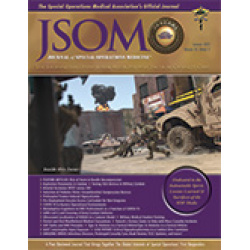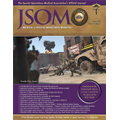Efficacy of the Military Tactical Emergency Tourniquet for Lower Extremity Arterial Occlusion Compared with the Combat Application Tourniquet: A Randomized Crossover Study
Samutsakorn DK, Carius BM 23(3). 36 (Journal Article)
Introduction: Extremity bleeding and subsequent hemorrhagic shock is one of the main causes of preventable battlefield death, leading to mass-fielding of modern tourniquets, such as the Combat Application Tourniquet (CAT; Composite Resources). Numerous look-alike tourniquets, such as the Military Tactical Emergency Tourniquet (MTET; SZCTKlink), flood commercial markets, offering visually near-identical tourniquets for drastically reduced prices. We examined the performance of the MTET compared with that of the CAT. Methods: We undertook a randomized crossover trial to observe self-applied tourniquets to the lower extremity by combat medics, comparing the CAT to the MTET in application time and success rates, proven by loss of distal pulse assessed by Doppler ultrasound in <1 minute. Results: All 50 participants (100%) successfully applied the CAT versus 40 participants (80%) using the MTET (p = .0001). Median application time for the CAT (29.03 seconds; range, 18.63 to 59.50 seconds) was significantly less than those of successful MTET applications (35.27 seconds; range, 17.00 to 58.90 seconds) or failed MTET applications (72.26 seconds; range, 62.84 to 83.96 seconds) (p = .0012). Of 10 MTET failures, three (30%) were from application time >1 minute and seven (70%) from tourniquet mechanical failure. Conclusion: The MTET performed worse than the CAT did in all observed areas. Despite identical appearance, look-alike tourniquets should not be assumed to be equivalent in quality or functionality to robustly tested tourniquets.


 Español
Español 






